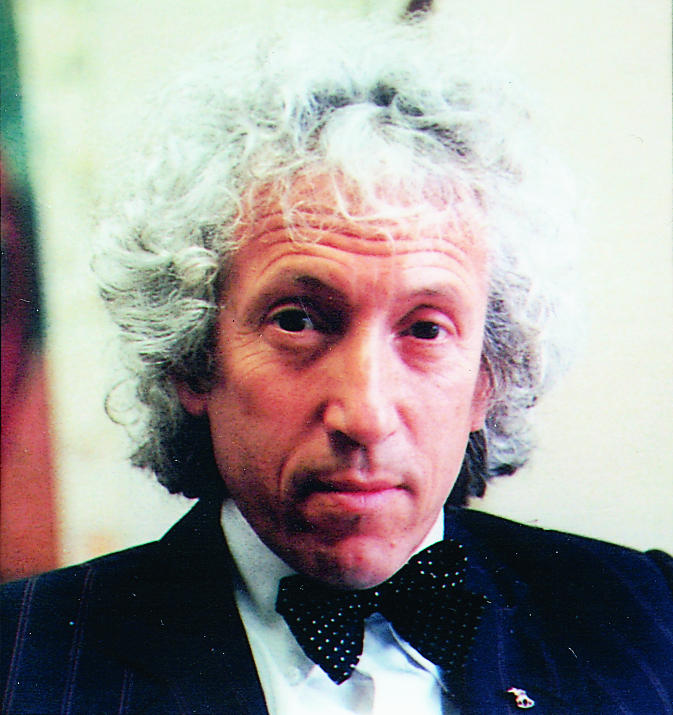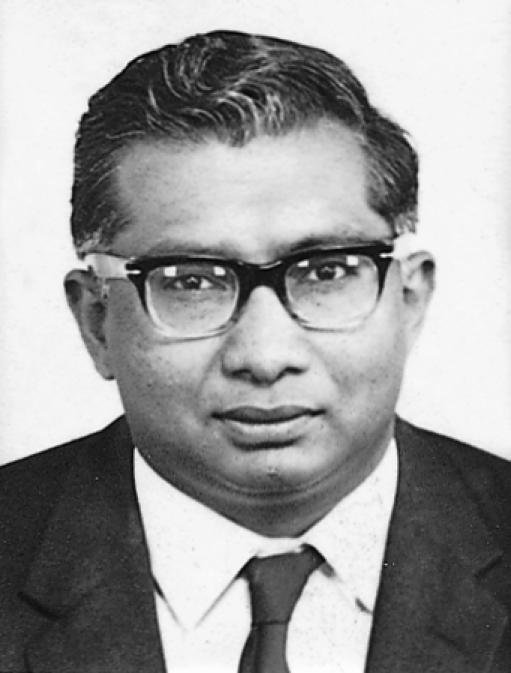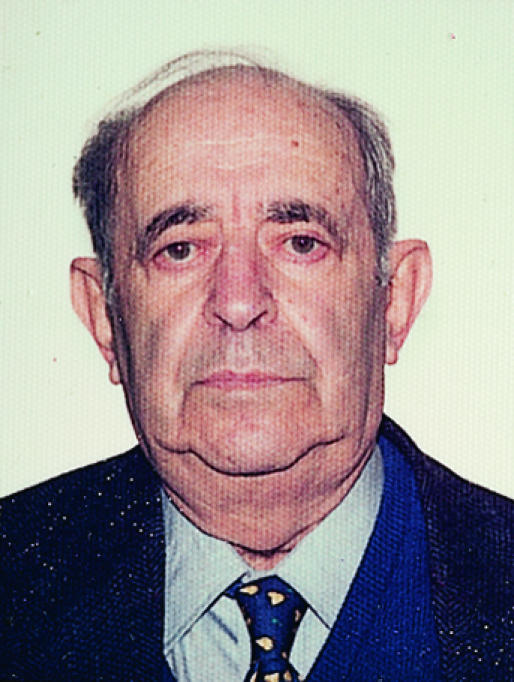John David Baum
 Professor of child health, University of Bristol, 1985-99 (b 1940; q Birmingham 1963; FRCP, FRCPCH), died from a heart attack while taking part in a charity cycle ride to raise funds for children affected by war, particularly those in the Balkans, on 5 September 1999. In 1967 David joined the team led by Sir Peter Tizard at the Hammersmith Hospital and made a reputation for his work caring for the newborn and in neonatal nutrition. He was visiting professor at the University of Colorado before moving to Oxford as a lecturer in 1972. His interests widened to include carbohydrate disorders, particularly diabetes mellitus, in childhood. He developed an affinity for the care of mortally ill children and was president of the Association for Children with Life Threatening or Terminal Conditions and their Families.
Professor of child health, University of Bristol, 1985-99 (b 1940; q Birmingham 1963; FRCP, FRCPCH), died from a heart attack while taking part in a charity cycle ride to raise funds for children affected by war, particularly those in the Balkans, on 5 September 1999. In 1967 David joined the team led by Sir Peter Tizard at the Hammersmith Hospital and made a reputation for his work caring for the newborn and in neonatal nutrition. He was visiting professor at the University of Colorado before moving to Oxford as a lecturer in 1972. His interests widened to include carbohydrate disorders, particularly diabetes mellitus, in childhood. He developed an affinity for the care of mortally ill children and was president of the Association for Children with Life Threatening or Terminal Conditions and their Families.
When he came to Bristol in 1985 David immediately devised a plan for an Institute of Child Health, and a converted nurses’ home was opened in 1989. He saw the need to broaden the clinical repertoire to include all the paediatric specialties. He played a part in the development of the new Bristol Children’s Hospital, which will embrace his vision of a comprehensive tertiary paediatric service for southwest England. Perhaps his most important unfinished business was as a children’s advocate, and his campaign triumphed in the formation of the Royal College of Paediatrics and Child Health, of which he was its second president from 1987. David brought an international perspective to his presidency and conceived and chaired a unique international task force under the patronage of the Princess Royal. Peace and reconciliation in the Middle East was another cause he strove for.
David was a man of ideas with a firm practical streak, which enabled most of them to succeed, and the results are so widespread that many people are unaware of their breadth. He enjoyed no better testing bed for his projects than a decent meal, fortified with badinage, strong drink, a mild cigar, and much laughter. His true affections, however, were his own family and his Jewish faith. Each was important enough for him to prefer sleeping in his own bed—even if it meant regular commuting—and spending the Sabbath at home. He leaves a wife, Angela, and four sons.
Queenie Muriel Francis Adams
Homoeopathic practitioner (b 1902; q Royal Free 1946), d 19 August 1999. In the 1930s she taught at a mission college in Cairo and took a missionary medical course in 1935. After she qualified as a doctor she returned to Egypt, working for the government during the cholera outbreak of 1948. In 1950 Queenie qualified at the Royal London Homoeopathic Hospital and then lectured in nervous diseases at the hospital, and taught students at the Missionary School of Medicine and at the All Nations Bible College. She was influenced by the work of Dr Margaret Tyler, who taught her skills in manipulative procedures long before osteopathy became a widely accepted form of treatment. She ran a philanthropic private practice in London and at various centres in southern England, established a nursing home in Reading, and founded a charitable trust for the Christian rehabilitation of young people with mental and physical problems, including drug addiction. Queenie moved to Cornwall in 1966 and continued to treat patients at home until well into her 90s. In her spare time she organised summer camps for children, cofounded a Christian school, and made a thorough investigation of the original Hebrew and Greek scriptures concerning the role of women as purposed by God. The result was Neither Male nor Female—A Study of the Scriptures, published in 1973. She was unmarried.
by M C S Cannell
Sinnadorai Bala
 Former consultant oral maxillofacial surgeon Withington and Wythenshawe Hospitals, Manchester, 1968-91 (b Penang, Malaysia, 1932; q Sri Lanka 1958; FDSRCS), died from a myocardial infarction on 28 July 1999. He was the first Sri Lankan dental surgeon to obtain the FDS in England. He was committed to excellence and a mentor to many. In his youth he had been a King’s Scout and obtained a private flying licence. He enjoyed walking, swimming, sailing, and travelling. He leaves a wife, Thanam; two daughters (one a GP); and three grandchildren.
Former consultant oral maxillofacial surgeon Withington and Wythenshawe Hospitals, Manchester, 1968-91 (b Penang, Malaysia, 1932; q Sri Lanka 1958; FDSRCS), died from a myocardial infarction on 28 July 1999. He was the first Sri Lankan dental surgeon to obtain the FDS in England. He was committed to excellence and a mentor to many. In his youth he had been a King’s Scout and obtained a private flying licence. He enjoyed walking, swimming, sailing, and travelling. He leaves a wife, Thanam; two daughters (one a GP); and three grandchildren.
by Kumutha Bala
Ian Hamilton Barclay
General practitioner Wiltshire (q Durham 1938; DTM&H), d 24 March 1999. He joined the Royal Air Force and escaped from Rochelle on a coal boat to Cardiff. He also served in west Africa. He worked in private practice after the war until he emigrated to Canada in 1948 where he served with the Royal Canadian Air Force until his retirement as group captain at 53. When his father died in 1968 he and his wife returned to England to clear up a complicated estate, which took so long that they stayed. In retirement to Wiltshire he worked as a locum GP for 12 years until his eyesight became inadequate for driving. He leaves a wife, Sally.
by Sally Barclay
Samuel Lovell Davidson
 Former consultant paediatric surgeon Royal Hospital for Sick Children, Glasgow, 1948-77 (b Spain 1912—his father was medical officer to the Rio Tinto Mines; q Glasgow 1938; FRCSGlas, FRCSEd; OStJ), died from a cardiac arrest on 8 August 1999. Sam was diagnosed as having diabetes mellitus in 1919 and after a precarious few years on dietary treatment he secured the first batch of insulin to reach Scotland in 1923. While at the Royal Hospital he was also visiting surgeon for 43 years to the Princess Louise Scottish Hospital in Erskine where he performed many operations before modern advances mandated the transfer of such procedures to a large neighbouring hospital. Sam’s surgical skills were renowned and he enjoyed teaching. He was equally meticulous when working on one of his cars, his boat, or on some other mechanical device, displaying the same painstaking care which characterised all his work. He achieved the distinction of being the longest living diabetic patient, having used insulin for 76 years, and only after retiral did he seek the advice of diabetologists who monitored his own excellent approach to his disorder. He was a long time member of the Western and Town and Country Medical Clubs. He leaves a wife, Marjory; two daughters; and two grandchildren.
Former consultant paediatric surgeon Royal Hospital for Sick Children, Glasgow, 1948-77 (b Spain 1912—his father was medical officer to the Rio Tinto Mines; q Glasgow 1938; FRCSGlas, FRCSEd; OStJ), died from a cardiac arrest on 8 August 1999. Sam was diagnosed as having diabetes mellitus in 1919 and after a precarious few years on dietary treatment he secured the first batch of insulin to reach Scotland in 1923. While at the Royal Hospital he was also visiting surgeon for 43 years to the Princess Louise Scottish Hospital in Erskine where he performed many operations before modern advances mandated the transfer of such procedures to a large neighbouring hospital. Sam’s surgical skills were renowned and he enjoyed teaching. He was equally meticulous when working on one of his cars, his boat, or on some other mechanical device, displaying the same painstaking care which characterised all his work. He achieved the distinction of being the longest living diabetic patient, having used insulin for 76 years, and only after retiral did he seek the advice of diabetologists who monitored his own excellent approach to his disorder. He was a long time member of the Western and Town and Country Medical Clubs. He leaves a wife, Marjory; two daughters; and two grandchildren.
by Robert W Logan
Kenneth Hollinrake
Consultant general physician and cardiologist George Eliot Hospital, Nuneaton, and Walsgrave Hospital, Coventry, 1973-97 (b Burnley, Lancashire, 1933; q University College Hospital 1959; FRCP), died from metastatic gastric carcinoma on 6 June 1999. Ken was a senior registrar at the Royal Free and Harefield Hospitals where he became interested in cardiology. When he moved to the West Midlands he was always keen to bring new cardiological techniques to the hospital and he fought for improvements with a dogged persistence, which earned him the respect of colleagues and patients. Ken took part in many forms of sport—athletics, boxing, and rugby at university, and later swimming and walking. He was interested in genealogy and enjoyed holidays and his lovely garden. Always down to earth and unpretentious, he carried on with stoicism and dignity during his last illness. He leaves a wife, Pam; a daughter and a son; and four grandchildren.
by A W Bullen and E R Williams
Peter Anthony Layard Horsfall
Former chest physician (b 1926; q Witwatersrand 1949; FRCP), died from malignant melanoma on 21 July 1999. He worked in Zimbabwe, South Africa, and the United Kingdom, and then he and his first wife, Edith (also a doctor), worked at Jane Furse Memorial Hospital in the Eastern Transvaal, creating with their colleagues an inpatient and district service of high standard. In 1963 Peter was appointed senior chest physician at the Grantham Hospital in Hong Kong, and served as medical superintendent for 13 years. He contributed to many regional and international conferences and was president of the BMA in Hong Kong. When he retired in 1994 he moved to Vancouver. Peter had a great interest in birds and recorded over 1100 species. He was happiest in the African bush, binoculars always round his neck. As well as Edith, he leaves his second wife, Irene; a daughter and a son; and five grandsons.
by Edith Waldman
Henry Lach
 Retired general practitioner, Greenwich (b Warsaw 1912; q Paris 1939), died suddenly from heart failure on 28 April 1999. During the second world war he served in the British and Polish forces in many countries. Henry settled in general practice in Greenwich after the war and remained there until he retired. He was a caring and popular doctor and a regular attender at local BMA meetings and at the West Kent Medico-Chirurgical Society. He was a great reader, especially medical books, as he was interested in keeping up to date in many specialties. Henry had an unusual hobby in which he excelled—he was a pigeon fancier, reaching the position of president of the Fancy Pigeons Club. He leaves a wife; a daughter; and three grandchildren.
Retired general practitioner, Greenwich (b Warsaw 1912; q Paris 1939), died suddenly from heart failure on 28 April 1999. During the second world war he served in the British and Polish forces in many countries. Henry settled in general practice in Greenwich after the war and remained there until he retired. He was a caring and popular doctor and a regular attender at local BMA meetings and at the West Kent Medico-Chirurgical Society. He was a great reader, especially medical books, as he was interested in keeping up to date in many specialties. Henry had an unusual hobby in which he excelled—he was a pigeon fancier, reaching the position of president of the Fancy Pigeons Club. He leaves a wife; a daughter; and three grandchildren.
by Francis Sorrell
William Tennant McClatchey
Physician superintendent Murray Royal Hospital, Perth, Scotland, 1965-82 (b Belfast 1917; q Belfast 1940; MD, FRCPsych), d June 1999. Bill spent the first years of his career in general practice, but in 1950 he decided to switch to psychiatry and obtained a fellowship at the Crichton Royal Hospital in Dumfries, a leading psychiatric hospital. After some years he was appointed consultant psychiatrist and published several papers on involutional depression and electroencephalography with W McAdam and A Tait. In 1959 he was appointed deputy physician superintendent at Glasgow Royal Mental Hospital (now Gartnavel Royal Hospital) and then moved to Perth. Bill’s practice was influenced by his early experiences in general practice, by his keen interest in psychotherapy, by the application of psychoanalytic ideas in clinical work, and by a sensitivity for people and their frailties. As a student Bill was an outstanding swimmer and represented his university. He was a member of the Irish water polo team and swam regularly until a few days before his death. He enjoyed playing the piano and listening to music—jazz and classical. He travelled extensively after he retired. Predeceased by his wife, Jane, he leaves two sons (one a general practitioner).
by Thomas Freeman
John Charlton Moor
 Former general practitioner Crook, Co Durham, 1932-80 (b Sunderland 1908; q Newcastle 1931; VRD), died from bronchopneumonia on 17 August 1999. During the war he served in the Royal Naval Volunteer Reserve, taking part in the evacuation of Norway, Dunkirk, Greece, and Crete. His ship, HMS Calcutta, was sunk during the evacuation of Crete, but he was rescued from the sea by a sister cruiser. He was awarded the Greek War Cross for his part in the evacuation. He ended active service in HMS Danae, was present at the D Day landings, and left the navy as a surgeon commander. He served on local medical committees for many years, was a member of the Bishop Auckland Hospital Committee, a founder member of the Crook Rotary Club, and president of the local choral society. Predeceased by his wife, Elsie, he leaves a daughter and a grandson.
Former general practitioner Crook, Co Durham, 1932-80 (b Sunderland 1908; q Newcastle 1931; VRD), died from bronchopneumonia on 17 August 1999. During the war he served in the Royal Naval Volunteer Reserve, taking part in the evacuation of Norway, Dunkirk, Greece, and Crete. His ship, HMS Calcutta, was sunk during the evacuation of Crete, but he was rescued from the sea by a sister cruiser. He was awarded the Greek War Cross for his part in the evacuation. He ended active service in HMS Danae, was present at the D Day landings, and left the navy as a surgeon commander. He served on local medical committees for many years, was a member of the Bishop Auckland Hospital Committee, a founder member of the Crook Rotary Club, and president of the local choral society. Predeceased by his wife, Elsie, he leaves a daughter and a grandson.
by Barbara Evans


